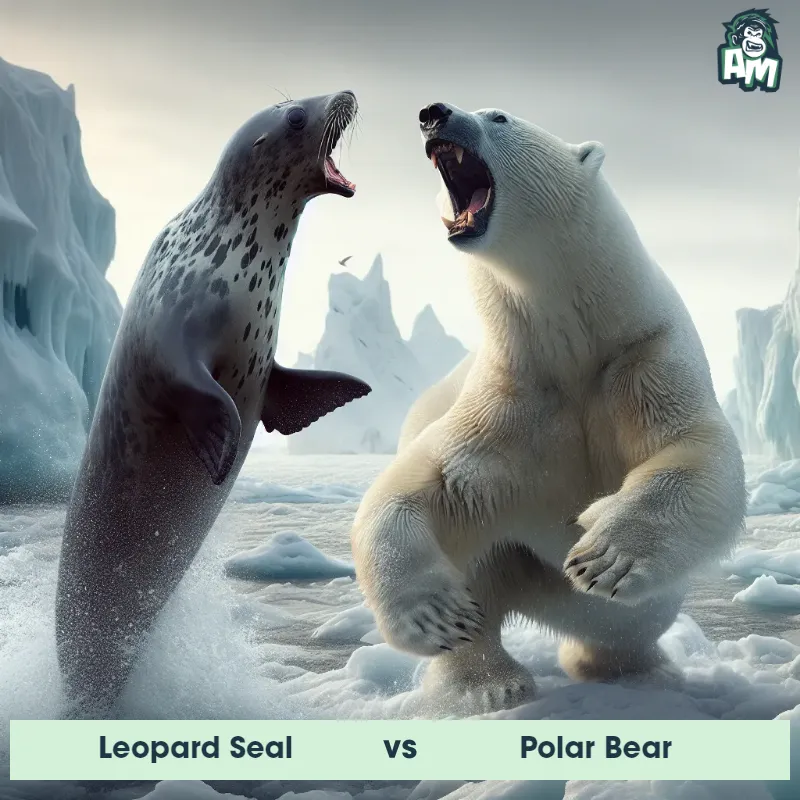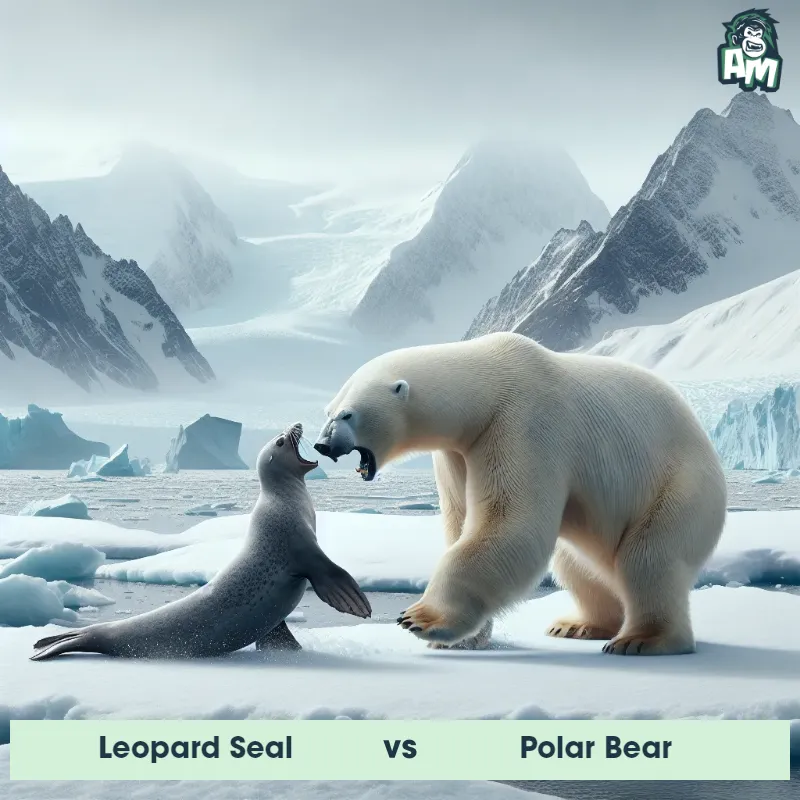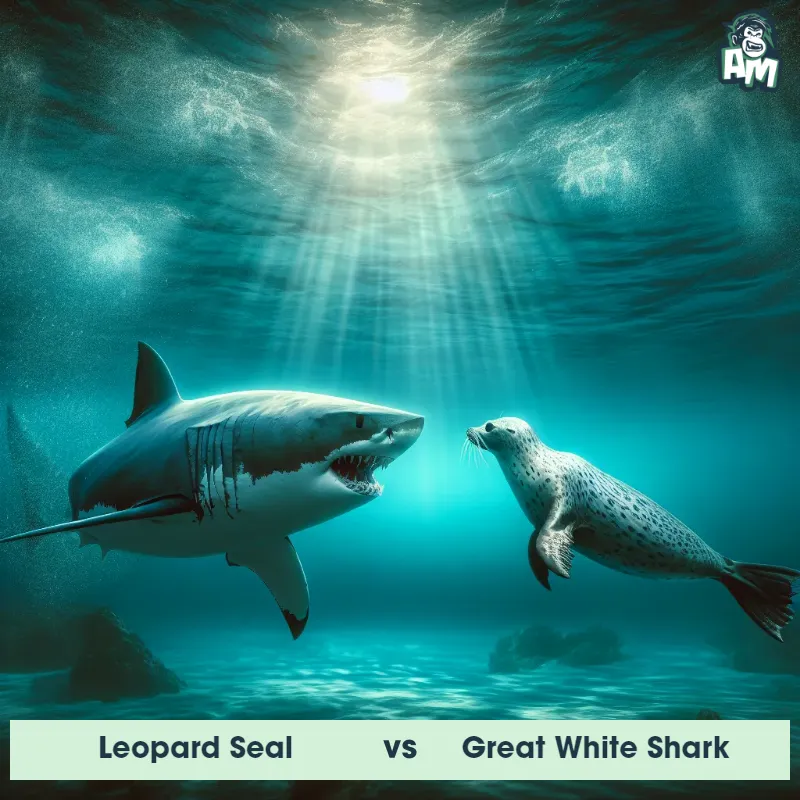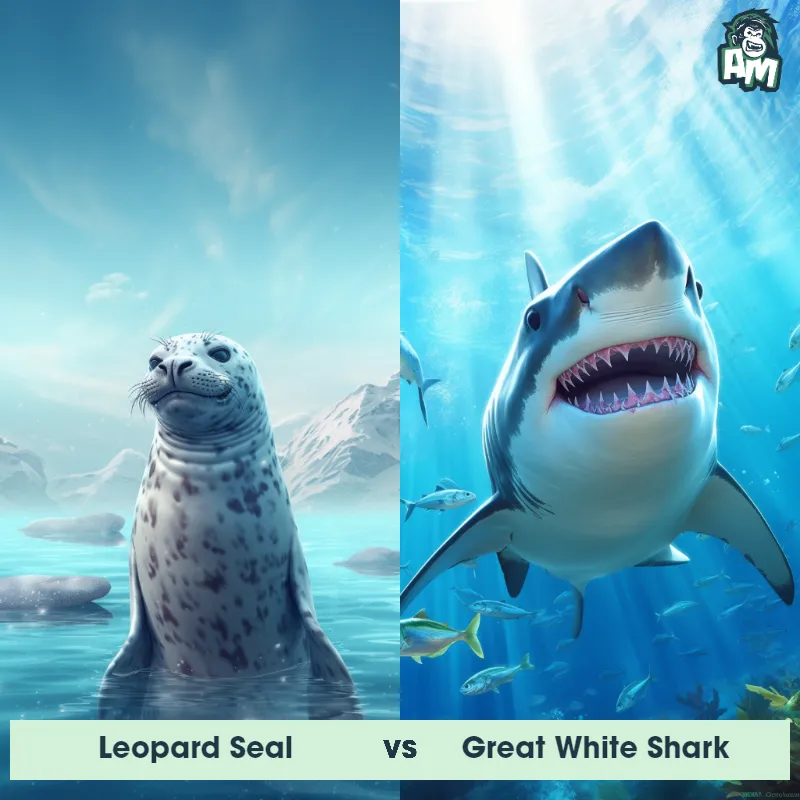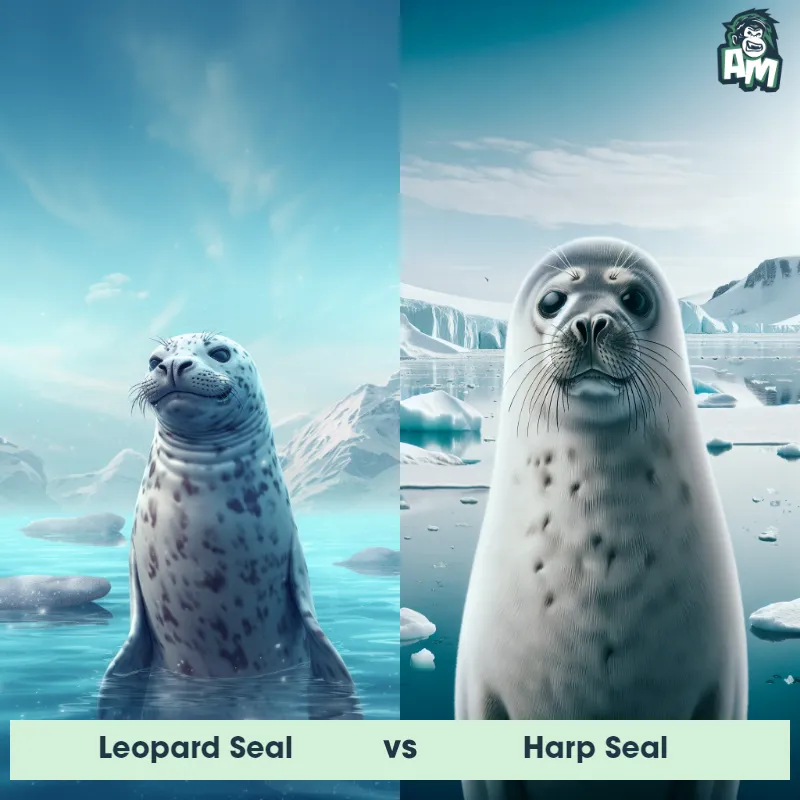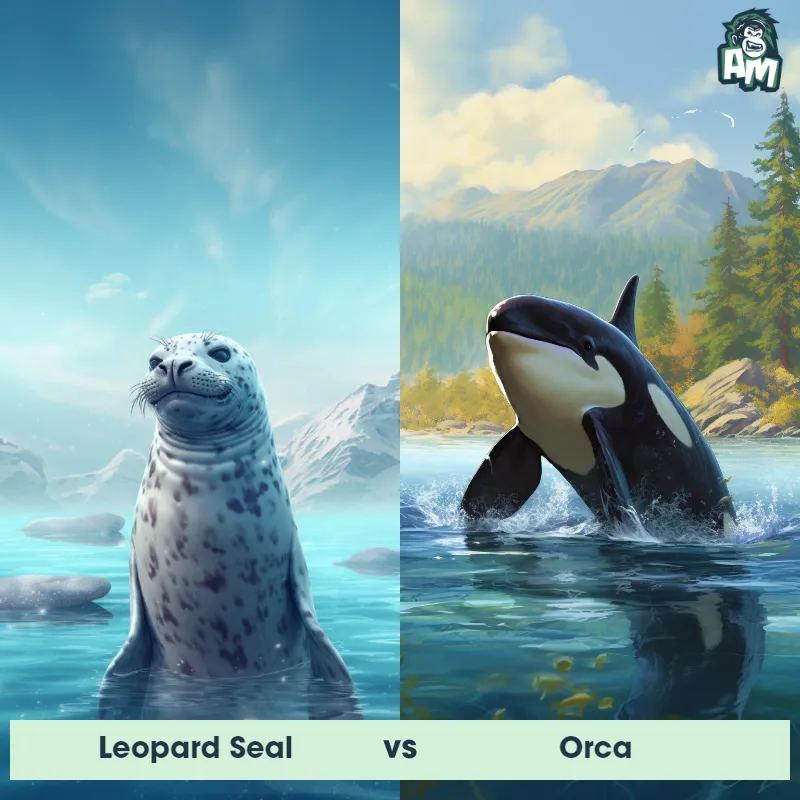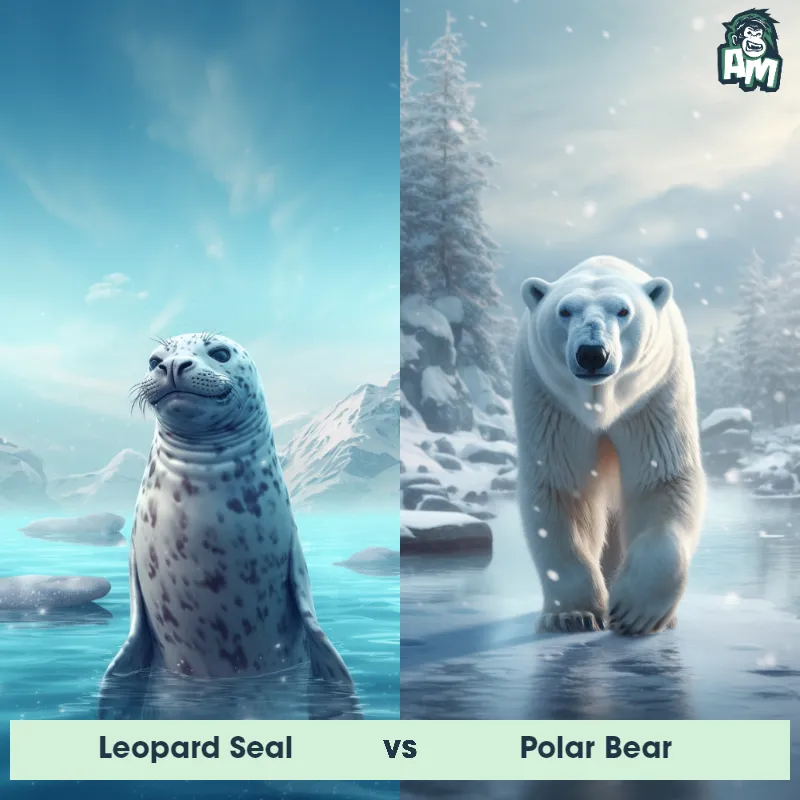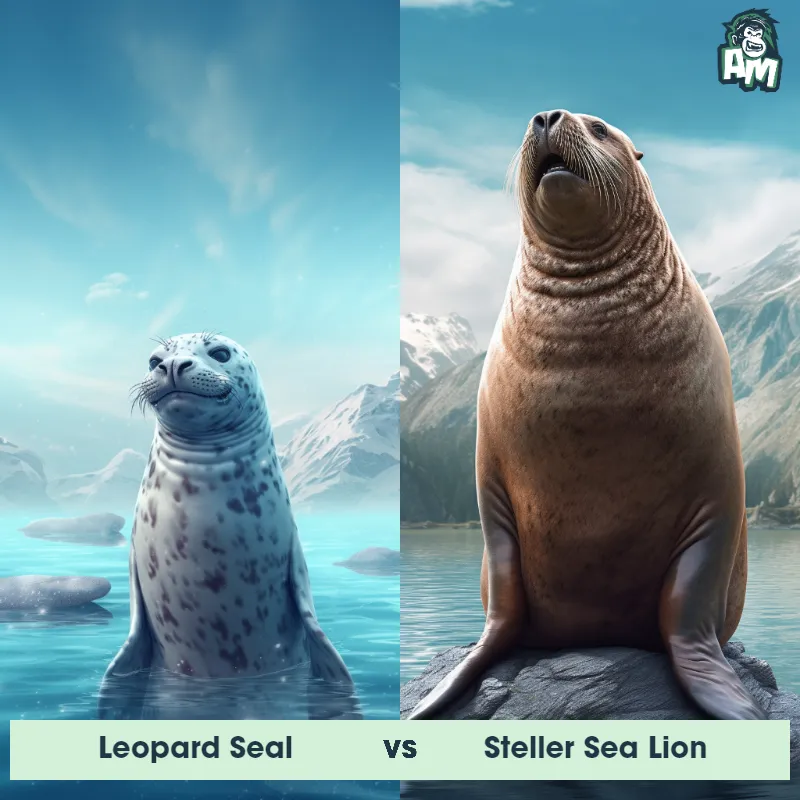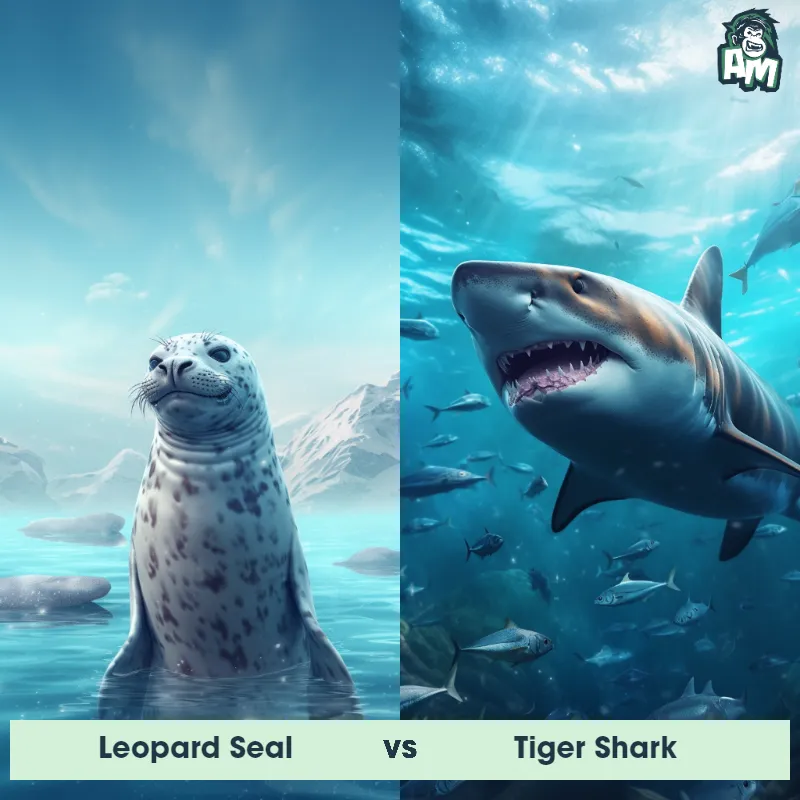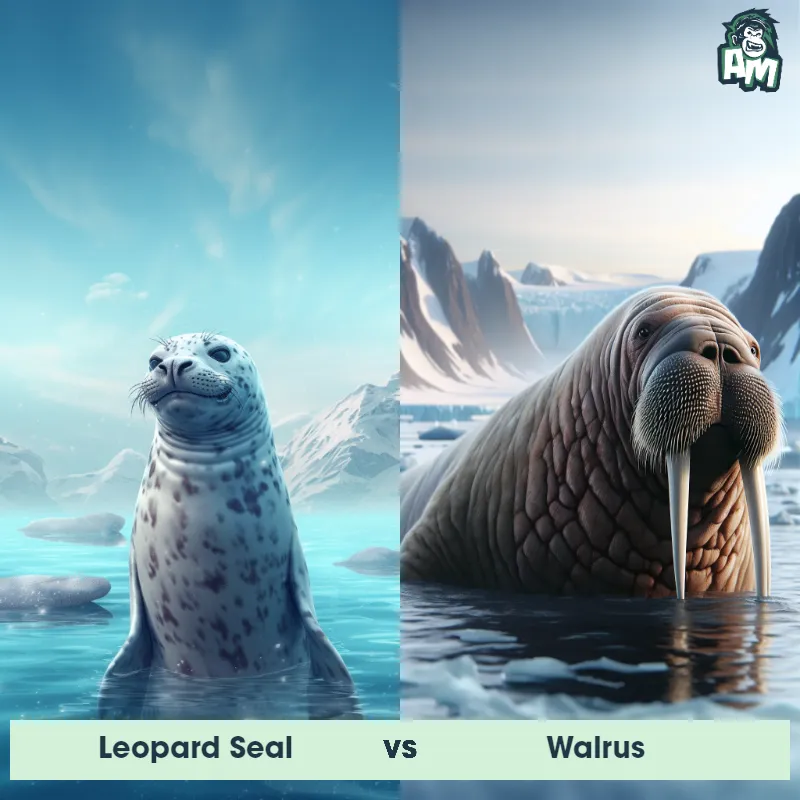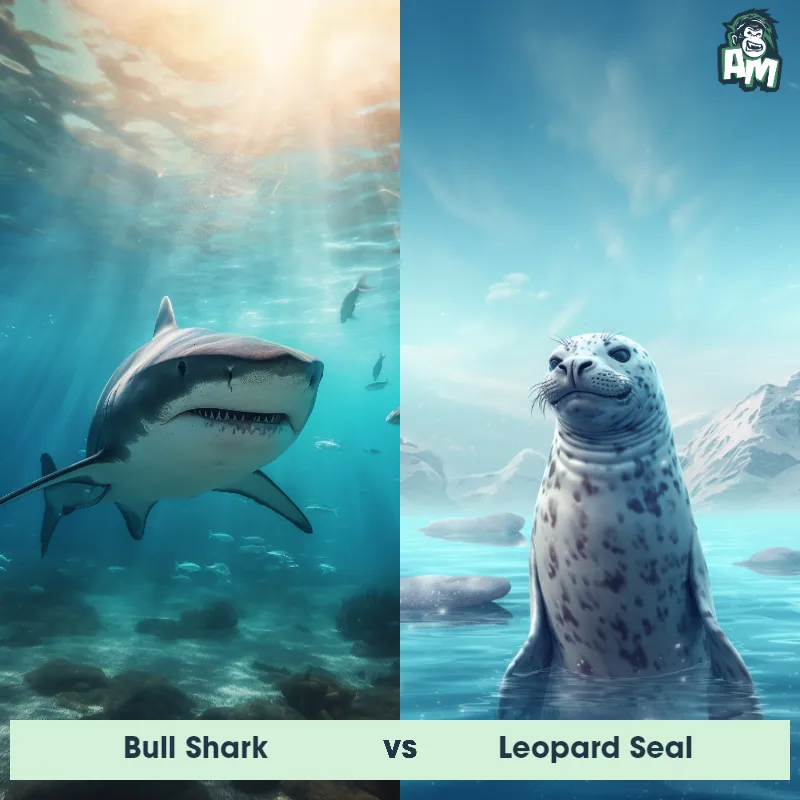The Leopard Seal
The Leopard Seal Hydrurga leptonyx is a large marine mammal that inhabits the Antarctic region. It is known for its distinctively long body and muscular build, which enables it to be a formidable predator. With their broad heads, powerful jaws, and sharp teeth, Leopard Seals are highly adapted for hunting and capturing prey. Their fur coloration ranges from dark gray to black with distinctive spots along their back, resembling those of a leopard, hence their name. They have large flippers and a streamlined body, allowing them to swim effortlessly through the cold waters of the Antarctic.

| Leopard Seal | |
|---|---|
| Size | Up to 11 feet (3.3 meters) in length |
| Weight | Up to 1,300 pounds (590 kilograms) |
| Speed | Speed: 25 mph (40 km/hr) |
| Key Strength | Powerful jaws and sharp teeth |
| Biggest Weakness | None noted |
| Scientific Name | Hydrurga leptonyx |
| Family | Phocidae |
| Habitat | Marine |
| Geography | Antarctic waters |
| Diet | Fish, squid, and other seals |
| Lifespan | 12 years - 15 years |

The Leopard Seal
The Leopard Seal Hydrurga leptonyx is a large marine mammal that inhabits the Antarctic region. It is known for its distinctively long body and muscular build, which enables it to be a formidable predator. With their broad heads, powerful jaws, and sharp teeth, Leopard Seals are highly adapted for hunting and capturing prey. Their fur coloration ranges from dark gray to black with distinctive spots along their back, resembling those of a leopard, hence their name. They have large flippers and a streamlined body, allowing them to swim effortlessly through the cold waters of the Antarctic.
Fun Fact: Leopard Seals are known to be excellent swimmers, and can reach speeds of up to 37 kilometers per hour 23 miles per hour when pursuing prey or evading predators.
| Leopard Seal | |
|---|---|
| Size | Up to 11 feet (3.3 meters) in length |
| Weight | Up to 1,300 pounds (590 kilograms) |
| Speed | Speed: 25 mph (40 km/hr) |
| Key Strength | Powerful jaws and sharp teeth |
| Biggest Weakness | None noted |
| Scientific Name | Hydrurga leptonyx |
| Family | Phocidae |
| Habitat | Marine |
| Geography | Antarctic waters |
| Diet | Fish, squid, and other seals |
| Lifespan | 12 years - 15 years |
Match Highlights
Leopard Seal Matchups
We use AI to simulate matchups between the Leopard Seal and other animals. Our simulation considers size, strength, and natural predatory behaviors to determine the most likely outcome.
Leopard Seal: Diet, Predators, Aggression, and Defensive Behaviors
What do Leopard Seals eat?
Leopard Seals primarily feed on a diet of fish such as cod, Antarctic icefish, and mackerel, as well as other marine animals like squid, penguins, and other seals. Leopard Seal are known for being apex predators in their ecosystem and are known for their opportunistic feeding behavior.
Do Leopard Seals have any predators?
As apex predators themselves, adult Leopard Seals do not have any natural predators in their habitat. However, young Leopard Seals may be targeted by larger predators such as killer whales and larger sharks.
Are Leopard Seals aggressive?
Leopard Seals are known to be quite aggressive predators and can display territorial behavior, especially when defending their hunting grounds or guarding their pups. While Leopard Seal are not typically aggressive towards humans, there have been instances where Leopard Seals have attacked researchers or divers.
Do Leopard Seals fight?
In the wild, Leopard Seals may engage in physical confrontations with other predators or compete for food resources. These fights can sometimes be quite brutal, with Leopard Seals using their powerful jaws and sharp teeth to establish dominance or defend their territory.
How do Leopard Seals defend themselves?
Leopard Seals use their large size, powerful jaws, and sharp teeth as their main defense mechanisms against potential threats. Leopard Seal are also strong swimmers and can move quickly through the water to escape danger. Additionally, Leopard Seals have a keen sense of hearing and can detect sounds underwater to help them avoid predators.
What is the biggest weakness of Leopard Seals in a fight?
Despite their formidable reputation as apex predators, Leopard Seals do have some vulnerabilities in a fight. One of their biggest weaknesses is their relatively small size compared to some of their predators, such as killer whales, which allows larger predators to overpower them in confrontations. Additionally, while Leopard Seals are strong swimmers, Leopard Seal may struggle to defend themselves against ambush predators in shallow waters or on land.
Fun Fact: Unlike many other seal species, Leopard Seals are not social animals and are typically solitary, preferring to live and hunt alone for most of their lives.
Fun Fact: Leopard Seals have a unique hunting strategy known as "porpoising," where they thrust their bodies out of the water and glide along the surface, gaining momentum to surprise their prey with quick bursts of speed.



